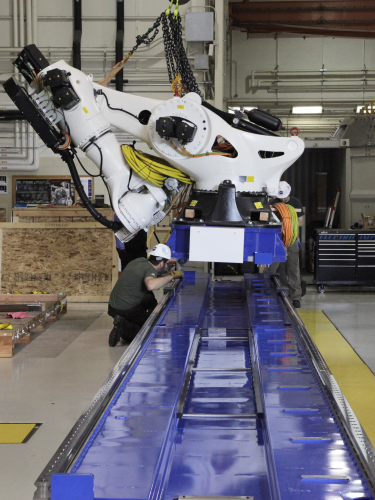
The advanced composite research capability, called ISAAC (Integrated Structural Assembly of Advanced Composites) is located in NASA’s Hampton, Virginia facility and cost around US$1.7 million dollars to develop and install.
"We have worked for two years to obtain this precise robotic technology. But we proposed the idea more than six years ago," said structural mechanics engineer Chauncey Wu. "It will really make a difference in our ability to understand composite materials and processes for use in aviation and space vehicles."
The researchers plan to have ISAAC up and running by early 2015 with the first research customer the Aeronautics Research Mission Directorate's Advanced Composites Project (ACP).
Space exploration
The ACP is a public-private partnership that is geared toward reducing the amount of time and money it takes to bring new, advanced composites from test tube to vehicles.
NASA's space projects also plan to use the ISAAC system in their research. The second project planned for the robot is the Composites for Exploration Upper Stage (C-EUS) Project, a partnership between the Space Technology Mission Directorate and Human Exploration Mission Directorate that is led by the Marshall Space Flight Center. The C-EUS Project is a three-year effort to design, build, test and address flight certification of a large composite shell suitable for the second stage of the Space Launch System.





